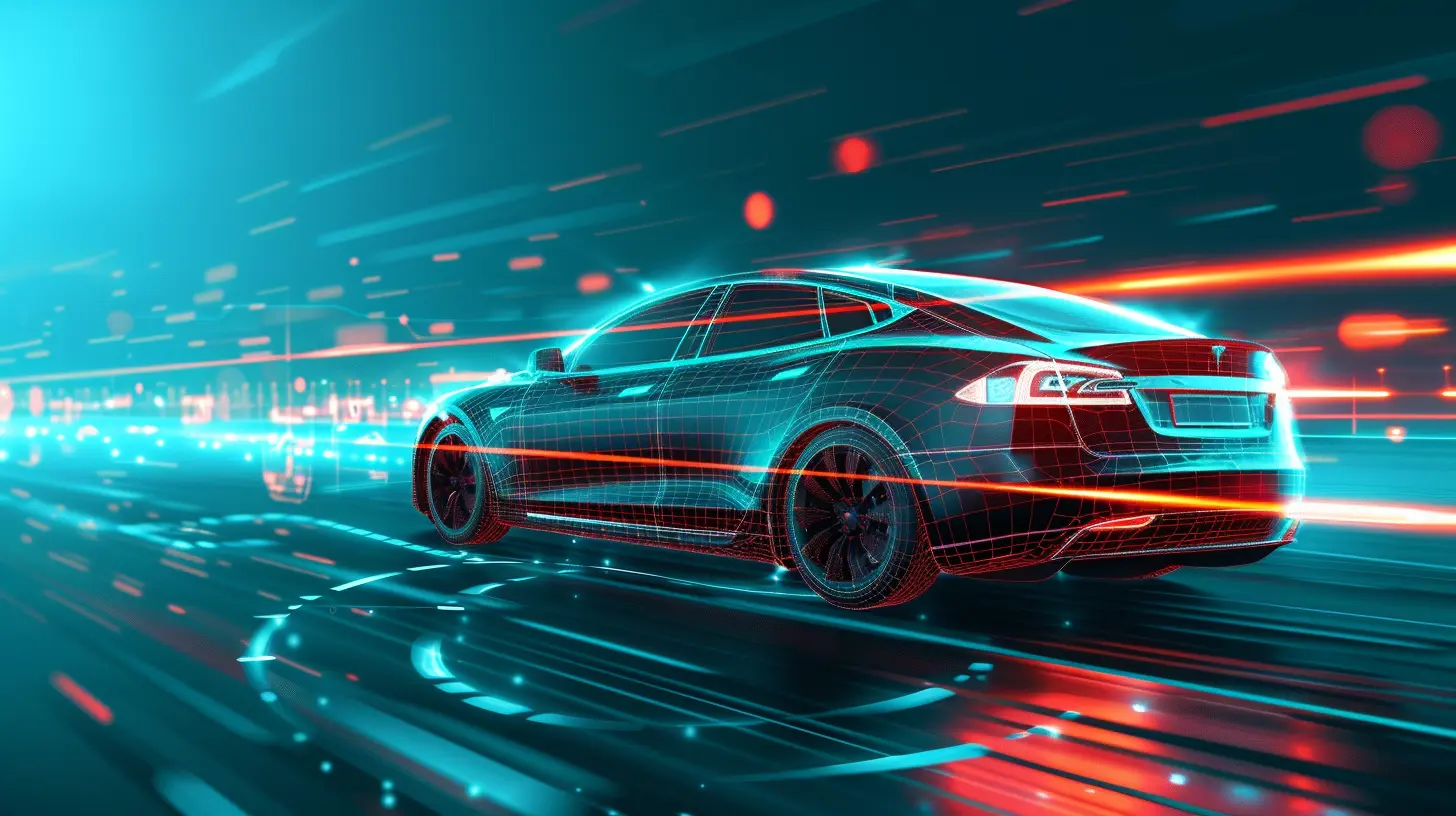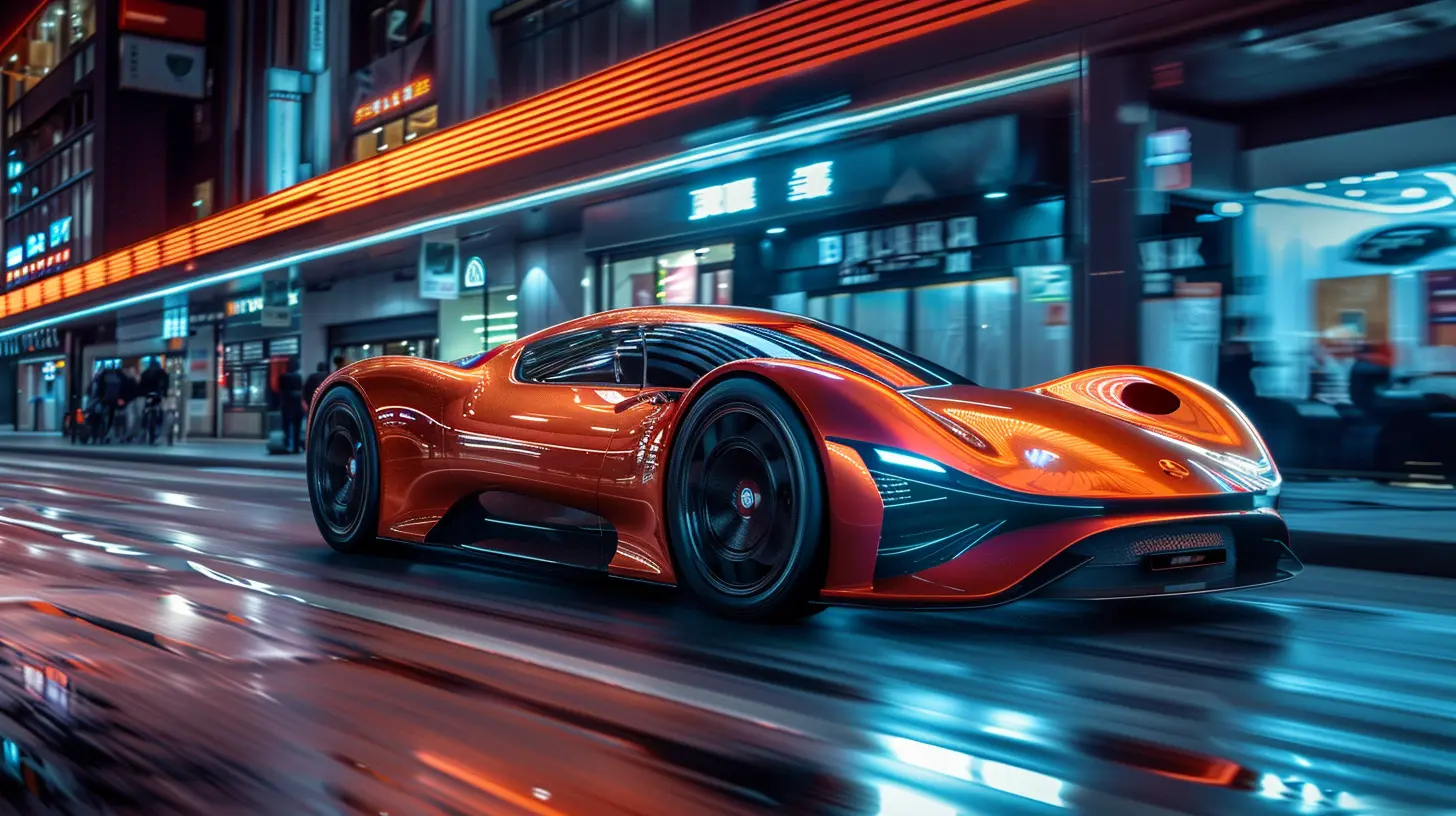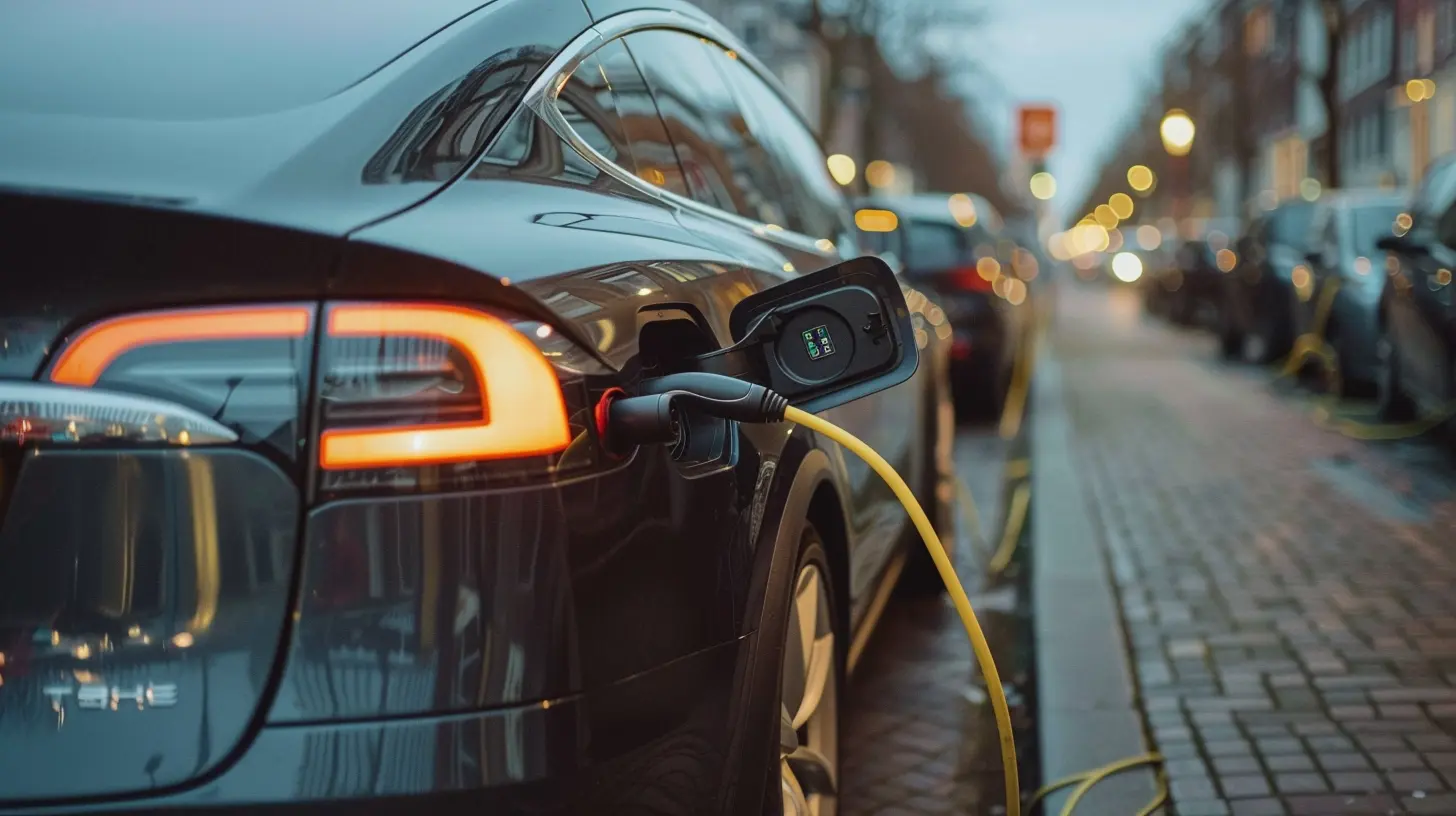How Electric Cars Are Redefining Performance and Speed
6 May 2025
When you think about electric cars, what’s the first thing that comes to mind? For many, it’s probably the idea of a greener future, reducing carbon footprints, or maybe even the thought of getting away from the gas pump. But let’s shift gears for a second. What if I told you electric cars are not just about sustainability—they’re also completely redefining performance and speed? Sounds surprising, right?
Well, buckle up. We’re going to explore how electric vehicles (EVs) are transforming the world of high-performance driving, leaving traditional gas-powered cars eating their dust, both literally and figuratively.

The Silent Revolution in Speed
Speed freaks, pay attention. Electric cars are no longer the slow, sluggish golf carts of the past. They're the Ferraris and Lamborghinis of the future. And here’s the kicker—they're doing it quietly. One of the most noticeable differences between electric vehicles and their gas-guzzling counterparts is the absence of that roaring engine sound. You know, the kind that makes your heart race when you rev the engine?But don't be fooled by the silence. Underneath the hood (or rather, the floor in most EVs), these cars are packing serious power. Electric motors deliver instant torque—meaning when you hit the pedal, you’re off like a bullet. No waiting for the engine to warm up or for gears to shift, just pure, unadulterated acceleration.
Ever heard of the Tesla Model S Plaid? This beast goes from 0 to 60 mph in less than 2 seconds. That’s faster than most supercars on the planet! And it's not just Tesla doing this. Brands like Porsche, Audi, and Rivian are rolling out EVs that rival, and in some cases, outperform some of the fastest cars on the road today.

Instant Torque: The Game Changer
Let’s talk torque for a second. In a traditional internal combustion engine (ICE) car, torque builds gradually as the engine revs up. You hit the gas, the engine roars, and eventually, you feel the car start to pull harder. But with electric cars, torque is instantaneous. It’s like flipping a switch—there’s no lag, no hesitation. Just pure, immediate thrust.Think about it like this: Imagine running a race, but instead of having to build up speed, you start at full sprint the moment the gun goes off. That’s what it feels like to drive an electric vehicle. This instant torque is what allows EVs to accelerate so quickly and smoothly, often leaving traditional ICE cars in the dust despite their roaring engines and high horsepower numbers.
And because electric motors are so much more efficient at converting energy into movement, you get more bang for your buck in terms of acceleration and speed. It’s not just about going fast; it’s about getting there faster, smoother, and with a lot less noise.

Efficiency Meets Performance
Now, you might be thinking, "Okay, EVs are fast, but can they keep it up?" The answer is a resounding yes. Electric cars are not just quick off the line—they’re also built for sustained high performance.The beauty of electric motors is their simplicity. There’s no need for complex transmissions, multiple gears, or turbochargers to boost power. Electric vehicles operate with far fewer moving parts compared to traditional gas-powered cars, meaning there’s less that can go wrong. This makes electric cars not only faster but also more reliable when it comes to long-term performance.
Moreover, the efficiency of electric motors means that they convert more of the energy from the battery into actual usable power. For comparison’s sake, a typical internal combustion engine is only about 20-30% efficient, meaning most of the fuel you burn is wasted as heat. Electric motors, on the other hand, can be up to 90% efficient. That means almost all of the energy stored in the battery is going directly to the wheels, propelling you forward.

The Role of Aerodynamics
Of course, speed isn’t just about horsepower or torque; it’s also about aerodynamics. The less drag a car has, the faster it can go. And here’s where electric cars are really shining.Because they don’t need large air intakes to cool an engine, EV designers have more freedom to create sleeker, more aerodynamic shapes. This not only helps with speed but also improves the overall range, as the car can cut through the air more efficiently.
Take the Lucid Air, for example. It’s one of the most aerodynamic production cars ever made, with a drag coefficient of just 0.21. That’s lower than a Ferrari! And the result? Faster speeds, better acceleration, and more miles per charge. It’s a win-win.
Battery Technology: The Fuel of the Future
You can’t talk about electric cars without mentioning batteries. After all, batteries are the lifeblood of an EV. And while early electric cars were often hampered by limited range and long charging times, advancements in battery technology are changing the game.Lithium-ion batteries, which are the most common type used in electric vehicles today, have come a long way in terms of both energy density and charging speed. More energy density means more power and longer ranges, while faster charging times mean you’ll spend less time waiting at charging stations.
Better yet, the development of solid-state batteries is promising to push the boundaries even further. These batteries are lighter, more energy-dense, and potentially safer than their lithium-ion counterparts. What does this mean for performance? Lighter batteries mean less weight, which translates to faster acceleration and improved handling. And with more energy density, we could see electric cars that rival the range of traditional gas-powered vehicles, all while delivering blistering speeds.
Regenerative Braking: A Performance Booster
Let’s not forget about braking. In traditional cars, braking is all about converting kinetic energy into heat, which is then lost to the atmosphere. But electric cars have a nifty trick up their sleeves—regenerative braking.When you brake in an EV, the car’s electric motor reverses direction, converting the car’s kinetic energy back into electrical energy and storing it in the battery. Not only does this extend the car’s range, but it also provides smoother, more controlled deceleration, improving the overall driving experience.
It’s like getting a little boost of energy every time you hit the brakes. And in some cases, like with the BMW i3 or the Tesla Model 3, you can even drive using just one pedal, with the car automatically slowing down as soon as you lift off the accelerator. This not only improves efficiency but also makes for a more intuitive and engaging driving experience.
Electric All-Wheel Drive: A New Kind of Control
All-wheel drive (AWD) has long been a staple of performance cars, providing better traction and control, especially in challenging conditions. But with electric cars, AWD is taken to a whole new level.In traditional AWD systems, power is distributed between the front and rear wheels using a complex system of differentials and driveshafts. But in electric cars, AWD can be achieved simply by adding a second motor to drive the other set of wheels. This allows for far more precise control over how power is distributed, resulting in better handling, improved traction, and, you guessed it, faster acceleration.
For example, in the Tesla Model X, each wheel can be controlled independently, providing near-instantaneous adjustments in power delivery. This not only makes the car faster off the line but also gives it unparalleled control in corners and slippery conditions.
The Future of Electric Performance
So, where does this all lead? The future of high-performance driving is electric, and it’s coming faster than you might think. Automakers around the globe are investing heavily in electric technology, not just because it’s better for the environment, but because it’s better for performance.We’re already seeing electric cars setting records on famous race tracks like the Nürburgring, and as battery technology continues to improve, we can expect even more impressive feats of speed and endurance. Who knows—maybe in a few years, the fastest car on the planet won’t be powered by gasoline, but by electricity.
Conclusion: Speed Without Compromise
Electric cars are no longer just about reducing emissions or saving money at the pump. They’re about speed, performance, and pushing the boundaries of what’s possible on the road. With instant torque, unparalleled efficiency, and cutting-edge technology, EVs are redefining what it means to go fast. Whether you’re a die-hard gearhead or just someone who enjoys a good drive, it’s time to start paying attention to electric cars because the future of performance is electric.So, are you ready to hop on board the electric revolution?
all images in this post were generated using AI tools
Category:
Electric VehiclesAuthor:

Ugo Coleman
Discussion
rate this article
7 comments
Kenzie McDonald
Electric cars are zooming into the future with style! 🚗⚡ Embrace the speed revolution—these eco-friendly powerhouses are here to redefine performance and make driving a thrill!
May 18, 2025 at 7:14 PM

Ugo Coleman
Thank you! It's exciting to see how electric cars are not only transforming eco-friendliness but also enhancing performance and speed. The future of driving looks thrilling!
Beatrice McGillivray
Electric cars are not just a shift in technology; they're a revolution in performance. As they redefine speed and efficiency, we're witnessing a greener, faster future. Embrace the change and drive the innovation!
May 16, 2025 at 9:02 PM

Ugo Coleman
Thank you for highlighting the transformative impact of electric cars! Their advancements in performance and efficiency truly signal a pivotal shift towards a sustainable future.
Quinn McInerney
Electric cars: leaving gas guzzlers in the dust and redefining fast—talk about a power move!
May 15, 2025 at 6:25 PM

Ugo Coleman
Absolutely! Electric cars are not just eco-friendly; they’re revolutionizing speed and performance, showcasing that power and efficiency can go hand in hand.
Tempest Hernandez
Electric cars are not just a step forward in eco-friendliness; they’re revolutionizing performance and speed, proving that innovation knows no bounds. Embrace this exciting shift in technology and drive into a future where sustainability meets exhilarating power!
May 15, 2025 at 2:38 AM

Ugo Coleman
Thank you for highlighting the transformative impact of electric cars! Their blend of sustainability and performance truly is paving the way for a thrilling future in automotive technology.
Jillian Black
Great read! It's fascinating to see how electric cars are pushing the boundaries of performance and speed. The advancements in technology are not only transforming the automotive industry but also promoting sustainability. Excited to see what innovations are on the horizon! Keep up the fantastic work!
May 10, 2025 at 6:50 PM

Ugo Coleman
Thank you for your kind words! I’m glad you enjoyed the article and share the excitement about the future of electric vehicles. Innovation is indeed key!
Reese Chavez
This article beautifully highlights the exciting shift in automotive performance with electric cars. It's inspiring to see how technology is not only enhancing speed but also promoting a sustainable future.
May 8, 2025 at 2:56 AM

Ugo Coleman
Thank you! I'm glad you found the article inspiring. The evolution of electric cars truly represents a thrilling blend of performance and sustainability.
Michelle Conrad
Electric cars are not merely reimagining performance; they are reshaping our very understanding of velocity and power. The instantaneous torque and silent acceleration challenge traditional notions of speed, prompting us to question whether true performance lies solely in numbers or in the experience of driving itself.
May 7, 2025 at 12:43 PM

Ugo Coleman
Thank you for your insightful comment! You're right—electric cars indeed transform our perception of performance by prioritizing the driving experience and redefining what speed truly means.
MORE POSTS
How Bluetooth is Being Used in the Latest Fitness Trackers

AI and Environmental Ethics: Green Technology or Resource Drain?

How to Extend the Battery Life of Your Bluetooth Devices

How Telecom Is Supporting the Evolving World of Gaming

The Role of Renewable Energy in Powering Electric Vehicles

The Role of AI in Optimizing Renewable Energy Consumption